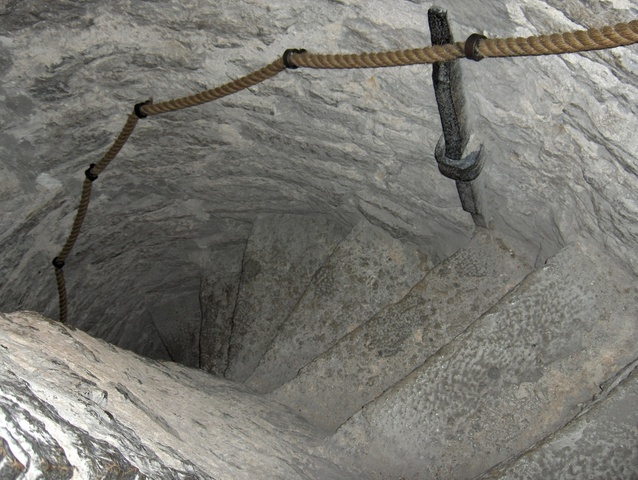Attractions in Tallinn
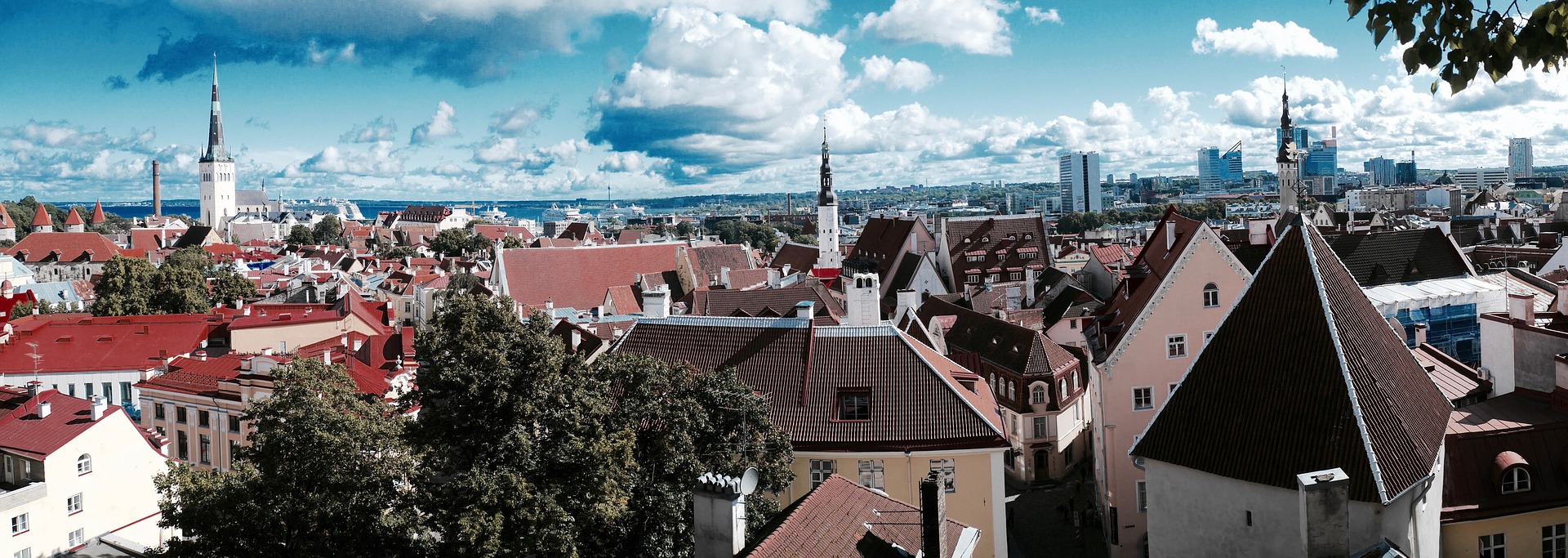
By Nele Õnnis
Raekoja plats / Town Hall Square
Located at the very centre of the Old Town, the Town Hall Square has been used as a marketplace for centuries.
Although the Town Hall Square remains to hold many festivals and handicraft fairs similarly to the past, it has now also become to be the cultural symbol of the city. During the summer, however, the square holds numerous concerts meant to be enjoyed by both local people and travellers. During that time the square is filled with various outdoors cafes for people with very different tastes to enjoy. In the winter, however, the Town Hall Square is most famous for its Christmas tree, which has been set up every year since the year 1441, and marks the beginning of Christmas time in September.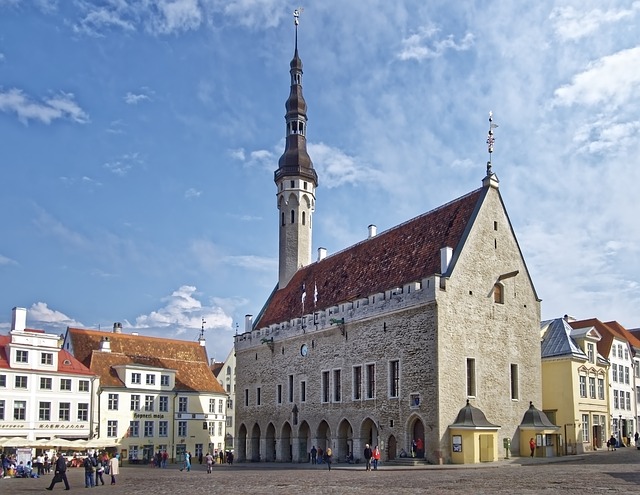
Raeapteek / Town Hall Pharmacy
Situated on the side of the Town Hall Square, the Town Hall Pharmacy is one of the oldest pharmacies in Europe still in practice. Established in the beginning of the 15th century, it is the very oldest business in Tallinn. At the end of the 16th century, the pharmacy was bought by the Burchart family from Hungary who, among selling medicine, believed it to be a great place for meeting people, socializing, and spending leisure time. Nowadays, however, rooms of the two-story house also hold a museum. Surprisingly, apart from modern drugs, Medieval medicine is still sold in the pharmacy making it stand out from the crowd.
Kunstimuuseum (KUMU) / KUMU Art Museum
Since 1919, the Art Museum of Estonia was constantly moving from one building to another without having a permanent home. It was not until the year 2006 when the new main building named KUMU was built. Designed by a famous Finnish architect Pekka Vapaavuori, the 20 970 m² building in Kadriorg is itself a masterpiece. Containing paintings and sculptures from famous Estonian and foreign artists, top of its class auditorium, several exhibition
halls and an education centre for children, it is a must see for people of all ages. In addition, after an interesting walk in the museum, hand-made pastries to a cup of tea or fresh coffee can be bought from KUMU Cafe next to the main entrance.
Kadrioru Kunstimuuseum / Kadriorg Art Museum
Kadriorg Art Museum is a branch of the Art Museum of Estonia founded already in 1919. The building of Kadriorg Art Museum is called Kadriorg Palace, and is situated in central Kadriorg. Besides art exhibitions containing paintings from the gifted 16th – 18th century German, Dutch, Italian and Russian artists, various theatre
performances and concerts are held in Kadriorg Palace. Apart from that, collection of paintings, sculptures and
applied art from the 20th century Western Europe and Russia can be found being displayed in various halls of the palace.
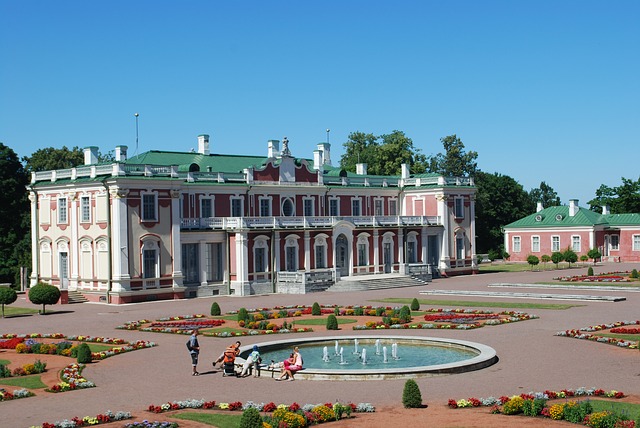
Kadrioru Loss / Kadriorg Palace
Kadriorg Palace was originally founded by Peter I, a Russian czar, to whom the palace only played the role of a summer residence. It is known that Peter I dedicated the building to his empress Catherine, which is why the word ”Kadriorg” actually means ”Catherine’s Valley”. Designed by a talented Italian architect Niccolo Michetti, it was built in a Baroque style that was especially popular in Rome in the beginning of the 18th century when the palace was built. Since 1929, a new building designed by an Estonian architect Alar Kotli was constructed as part of Kadriorg Palace, which then became the main residence of the President of Estonia. Kadriorg Palace is also the home of the foreign branch of the Art Museum of Estonia.
Raekoda / Town Hall
The Town Hall in Tallinn is situated at the side of the Town Hall Square in the middle
of the Old Town. Built around the 13th century, it is the only well-preserved town hall in the whole Northern-Europe that is designed in a Gothic style. For a long time the building was used by the city’s administration; nowadays, however, it serves as an official reception hall. The vane at the top of the tower of the Town
Hall, called the Old Thomas, has become a guardian and an extremely important symbol of Tallinn.
Kiek in de Kök
Kiek in de Kök refers to a famous tower in the Old Town, which was built in the 15th
century in order to protect the city of Tallinn from foreign intruders. During the war at the end of the 16th century, thick walls of the tower proved to be invaluable as Russian forces could not take them down. Nowadays, it functions as a museum displaying cannons and other weaponry used in battles against the tower. In addition, Kiek in de Kök means ”peep into the kitchen” in Low German. It got its name during wartime as soldiers were able
to see into kitchens of other buildings below the tower. 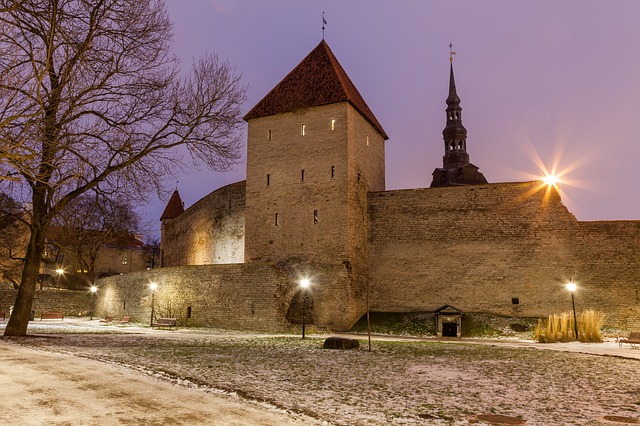
Toompea linnus / Toompea Castle Complex
Toompea Castle Complex contains several important buildings them being the west wall and the Tall Herman Tower, the Government Administration building and the house of the Estonian Parliament. Until the beginning of the 20th century, Toompea Castle was ruled by several foreign leaders. That is why the Administration building of
the Government was established (in 1773) by the Russian Empress Catherine. The building of Estonian Parliament, however, was not built before the year 1922. In addition, it has been argued that the Expressionist design of the building makes it stand out among other parliament buildings in the world.
Peeter Suure Majamuuseum / Peter the Great’s Home Museum
During the Great Northern War in the beginning of the 18th century, it was the Russian czar Peter I who expanded the borders of the Russian Empire by, among other countries, conquering Estonia. It is for that reason he needed a residence to stay in during his visits. Together with the land where Kadriorg Palace now stands he bought a small house, which was reconstructed and expanded according to his needs. The building has been restored for several times in history, once even Alexander I in 1804. Nowadays, the building functiones as Peter the Great’s House Museum. Situated close to Kadriorg Palace, Peter the Great’s Museum is a convenient and interesting venue to visit
by all tourists.
Okupatsioonimuuseum /Museum of Occupations of Estonia
Located in central Tallinn, the Museum of Occupations of Estonia has been a popular tourist attraction for years. It is casting light upon the difficult years of Estonia in the 20th century, right before the country gained its independence. Displaying different videos, pictures and sound elements, the museum gives an overview of Soviet Union and German occupations of Estonia during the years 1940-1991. It also presents the changes made in cultural
and economic life of Estonians, and describes how people felt and coped with the new situation during the times of
occupations.
Varasem KGB Peakorter /Former KGB Headquarters
For Estonians and Soviet Union enemies, the building of Former KGB Headquarters in Tallinn was one of the most feared places of the 20th century. Its bricked-up basement windows, which concealed the
sound, give notice of the horrible interrogations and torturing that was going on between the walls of the building. Back then, KGB Headquarters was a symbol of an enormous power as only a few people dared to defy the authority of the armed forces of the Soviet Union. In addition, the closeness to Saint Olaf’s Church in central Tallinn gave KGB officers an opportunity to use the long spire of the church in order to send radio transmissions and, therefore,
strengthen the surveillance over Estonian people.
Toomkirik / Saint Mary’s Cathedral
Established by Danes around the 13th century, Saint Mary’s Cathedral is officially the oldest church in Tallinn.
What was originally a Roman Catholic church was turned into a Lutheran church in 1561. It was first made out of wood, which made its survival in the 17th century fire, when many other buildings burned into ashes, even more surprising. Despite the survival, the Dominican monks decided to replace the wooden church with a stone one in the year 1229. Among many other well-known people from history, the Swedish army’s general Karl Henriksson
Horn is buried in the cathedral.
Niguliste kirik/ Saint Nicholas’ Church
Firstly built during the 13th century and dedicated to Saint Nicholas, patron of fishermen and sailors, Saint Nicholas’
Church is a great example of marvellous Gothic architecture. Partially destroyed in the Soviet Union bombings during the World War II, it was restored and is now used as a concert hall and a museum. It has been said that the acoustics of the church is extraordinary, and that is why many concerts are held in Saint Nicholas’ Church. The museum, however, displays Medieval religious art including Bernt Notke’s 15th century masterpiece ´Danse
Macabre´, which is one of the most famous pieces of art in the entire Estonia.
Oleviste kirik / Saint Olaf’s Church
Dedicated to King Olaf II of Norway, Saint Olaf’s Church was built in the 12th century, but was heavily reconstructed already in the 14th century. Between the years 1549 and 1625, with the help of its long spire, the 159 metres high Saint Olaf’s Church was the tallest building in the world. Even now, with its height of only 123,7 metres,
it is one of the tallest churches in the world. According to a legend, the builder of the church named Olaf accidentally fell down from the top of the church after its completion. It is said that after his body touched the ground, a snake and a toad crawled out from his mouth and turned into stone on the spot – it also is to be seen to this day.
Dominiiklaste klooster / Dominican Monastery
The Dominican Monastery in Tallinn was built in 1246 by Dominican monks, who wanted to preach the word of God. The site of the monastery in the Old Town is said to be very carefully chosen in order to facilitate both the ministry of the friars and their business interests. Unfortunately, most of the monastery was destroyed in the past as only small pieces of it are still visible to the present day. Furthermore, the monastery was dissolved in 1546 due to the start of the reformation. In the middle of the 20th century, however, the monastery was restored and some of its remains were used to construct a museum. Thus, the museum is currently displaying stone sculptures and carvings of Estonian history.
Pühavaimu kirik / Church of the Holy Spirit
The Church of the Holy Spirit plays a very important role in Estonian history as it was the first church to hold services in the Estonian, and not in foreign, language. Four years later, in 1535, a short catechism, later known as the oldest book in Estonian language, was completed by pastor of the Church of the Holy Spirit named Johann Koell, and the pastor of Saint Nicholas’ Church called Simon Wanradt. However, the next pastor of the church was not less noteworthy. Balthasar Russow published the Livonian Chronicle in 1578, and it appeared to be an invaluable guide for studying Estonian history during the 16th century. The church itself dates back to the 13th century and is
now used as a museum displaying, among other masterpieces, the main altar created by Bernt Notke.
Aleksander Nevski katedraal / Alexander Nevsky Cathedral
Alexander Nevsky Cathedral, situated in the Old Town of Tallinn, was built at the very end of the 19th century when Estonia was still part of the Soviet empire. The orthodox cathedral was designed by a famous Russian architect Mikhail Preobrazhensky and built in a classic Russian Revival style. Without doubt is Alexander Nevsky Cathedral Tallinn’s largest and the most grandiose orthodox cupola cathedral. Furthermore, the church’s towers hold Tallinn’s most powerful church bell ensemble, including the largest bell in Tallinn. However, when the cathedral was built, during the Russification of Estonian system by the Soviet forces, it was disliked by most local people as it symbolized the oppression that came along with several occupations.
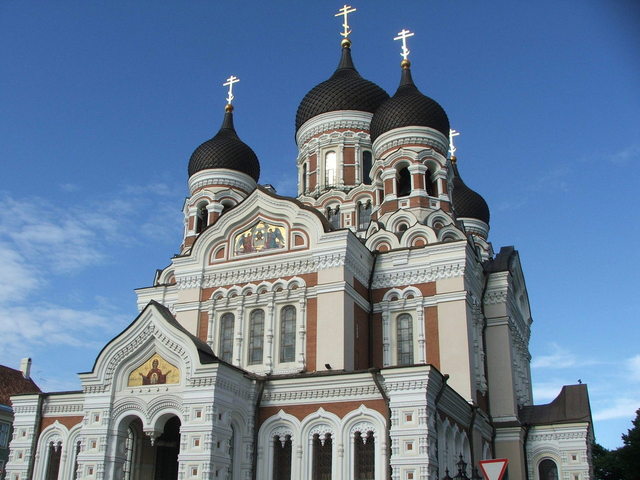
Pikk tänav / Long Street
The Long Street with all of its 723 metres is, without doubt, the longest street in the Old Town of Tallinn. The Long Street connects the Long Leg Gate Tower with the Great Coastal Gate. It is lined with gorgeous and well-preserved 15th and 16th century buildings – each of them being one of a kind. Together with the Broad Street, Long Street was one of the most used streets in the whole Medieval Tallinn. In addition, both of the streets run parallelly from Toompea towards Tallinn Bay. On the street Estonian History Museum, the House of Blackheads, Saint Olaf’s Church, Estonian Maritime Museum and several small cafes can be found.
Bastioni käigud / Bastion Tunnels
It is believed that the first Bastion tunnels were constructed in the beginning of the 17th century in relation to the creation of the Wismar ravelin. More tunnels were built during the 18th century. The purpose of the tunnels was that soldiers were now able to fire alongside the walls of the fort that they could not do before. The tunnels were made out of limestone and were about 1,5 metres wide and 2,5 to 3 metres high. The overall length of the tunnels
underground is said to be more than 380 metres. During the 18th century, the tunnels were also used as stockrooms; nowadays, they are finally opened to visitors from Estonia and different parts of the world.